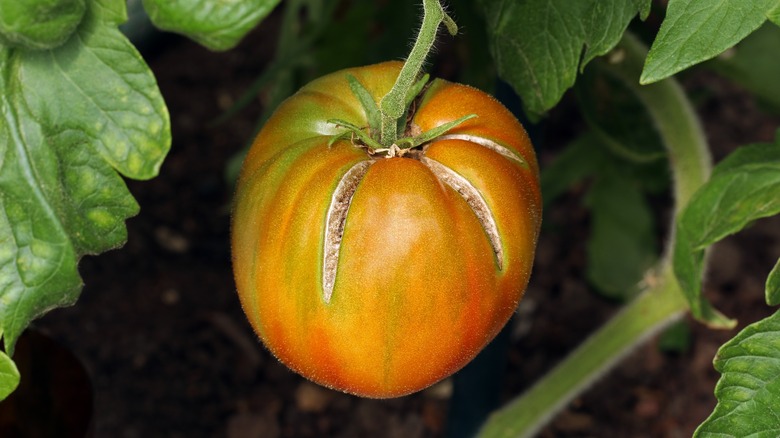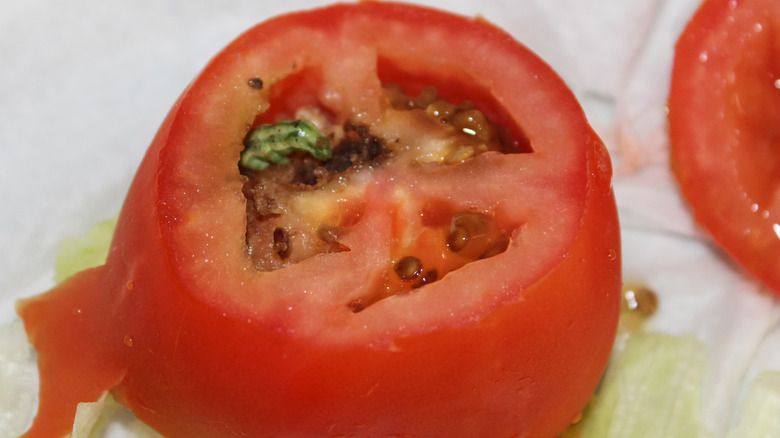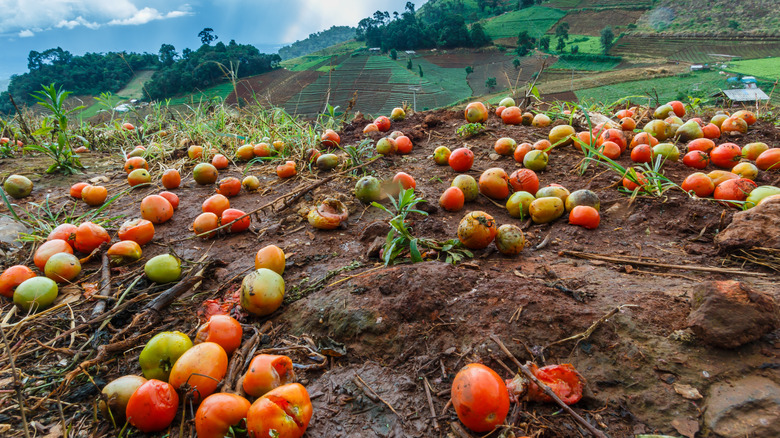The Clever Way You Should Be Reusing Your Split Tomatoes In The Garden
Seeing a split tomato after spending months trying to grow it is disheartening. Splitting is usually a result of inconsistent water or pests. Tomatoes will develop cracks down the middle or sides, which will cause them to open, making them irresistible to hungry pests. These open spots on tomatoes put them on a fast track to rotting. Rather than throwing them out, you can repurpose them in the garden to make the most of the work you put into growing them. Split the tomato in half and leave it face down on the soil near your tomato plant. Pests will flock to it, greatly reducing the population on your plants. As the tomato decomposes, the nutrients will return to the soil, which will help your existing plant and future plants in your garden.
Hopefully, you won't have to do this often. But it's a great way to use the compromised fruit, and it will help act as a compost in your soil, which every gardener knows is invaluable. You can also use this method around other plants with similar pest problems. Tomatoes are in the nightshade family with eggplants, peppers, and potatoes and they are often plagued by many of the same pests.
Keep pests away from your plants
Stink bugs, tomato hornworms, and fruit worms are just a few of the many pests that target tomato fruits. They also damage the rest of the plant, but it's most annoying when they go after the part you plan to eat. Putting a split tomato on the ground makes it easier for them to get what they want. The tomato is already open and on ground level, and when you put it face down, you create a hiding space for the pests to stay safe. The tomato plants on the vine become less appealing since they have it easier down below.
You can also use this method to remove pests from your soil. Leave the tomato on the ground for a day or so, then throw it away in the early morning. Plenty of critters should be hiding within the tomato that you can easily discard. You'll need to trap or kill any on the soil. Continue this process throughout the growing season to reduce pest populations.
Return nutrients to the soil
If you don't want to throw tomatoes away to eliminate pests, let them rot and return to the earth. Tomatoes are full of nutrients that will benefit plants, like iron, calcium, and magnesium, so letting your bad tomatoes "go to waste" isn't wasteful at all. It will take some time for it to decompose, but if you let the bugs go at it, it will deteriorate faster. If you don't want tomatoes on the surface of your soil, consider burying them slightly. This will help hide any foul odors and prevent larger pests like raccoons or curious dogs from finding them. However, the pests on your ripening tomatoes may not find them as easily.
You can also add split tomatoes to your compost pile if you don't want them directly in your garden. Mixing them up into the rest of the compost will help them decompose quickly, especially if you have a hot compost bed that stays warm in the summer. This method will allow the wasted tomato to help add nutrients to your entire garden.


